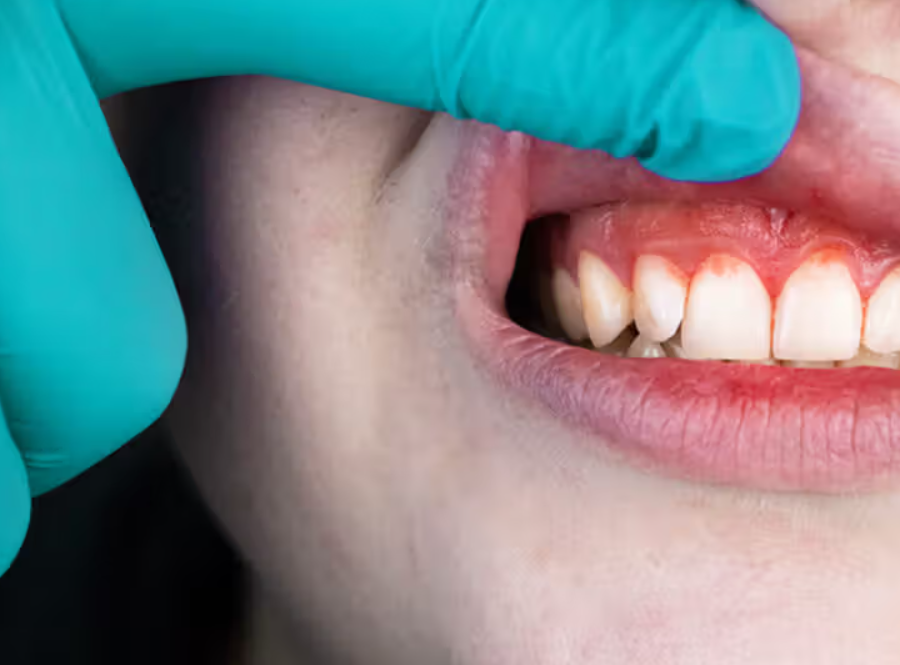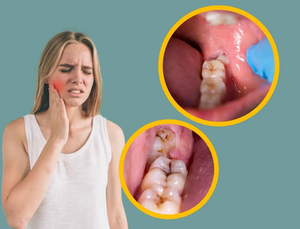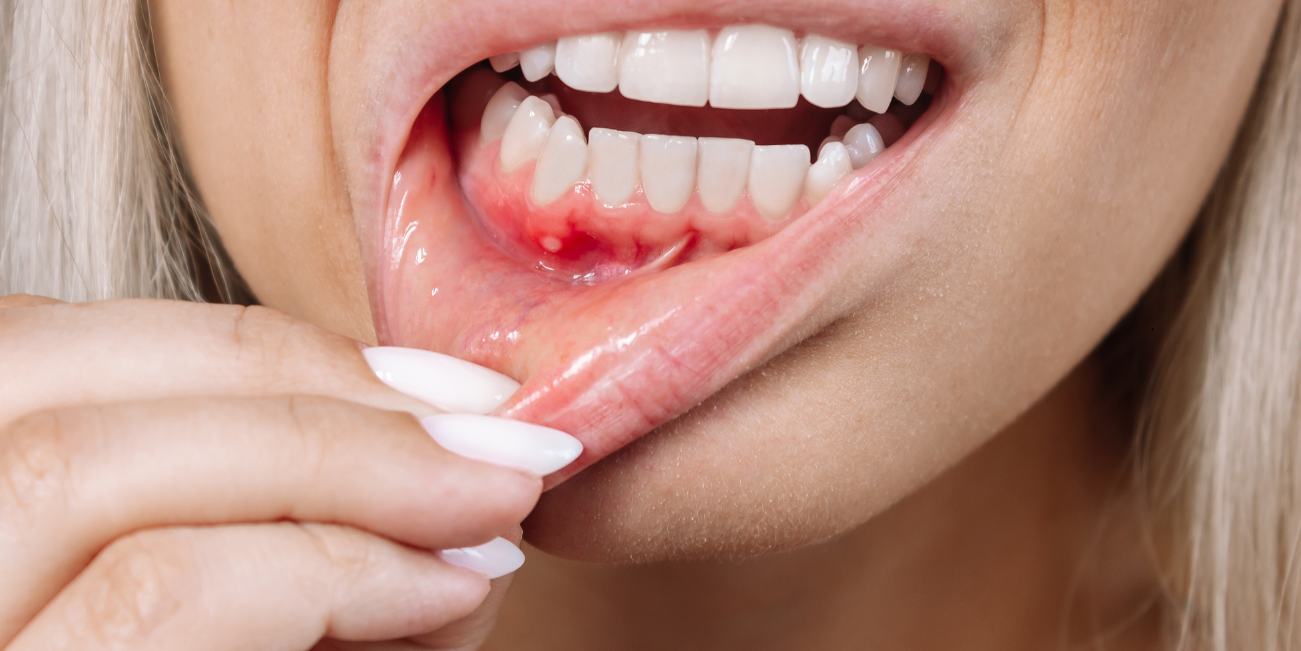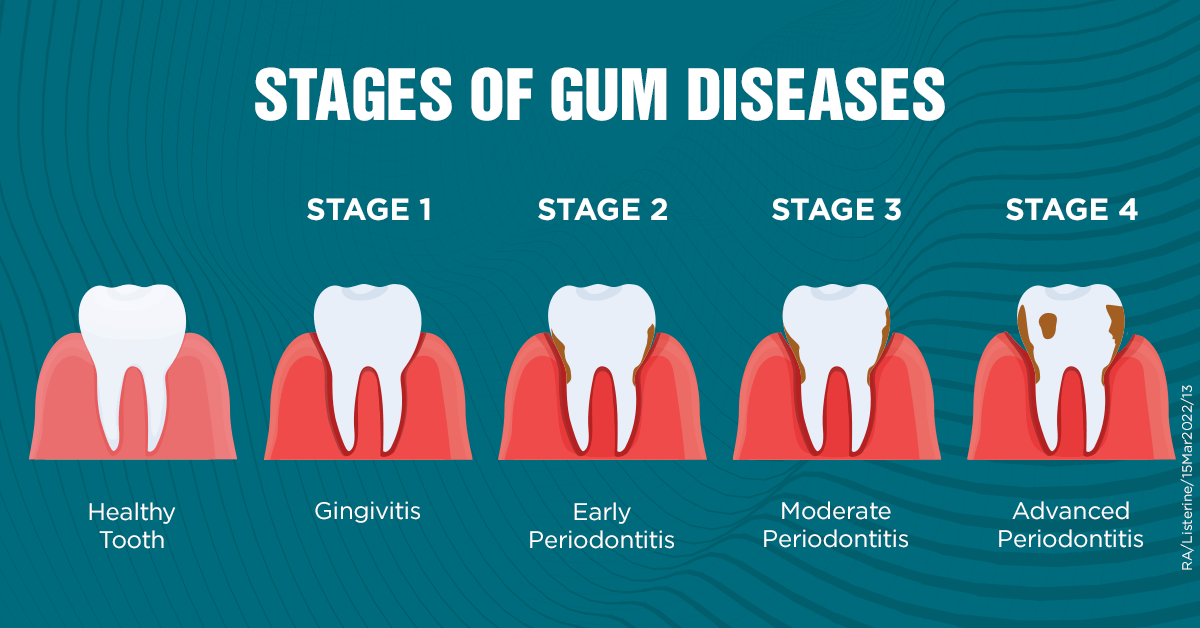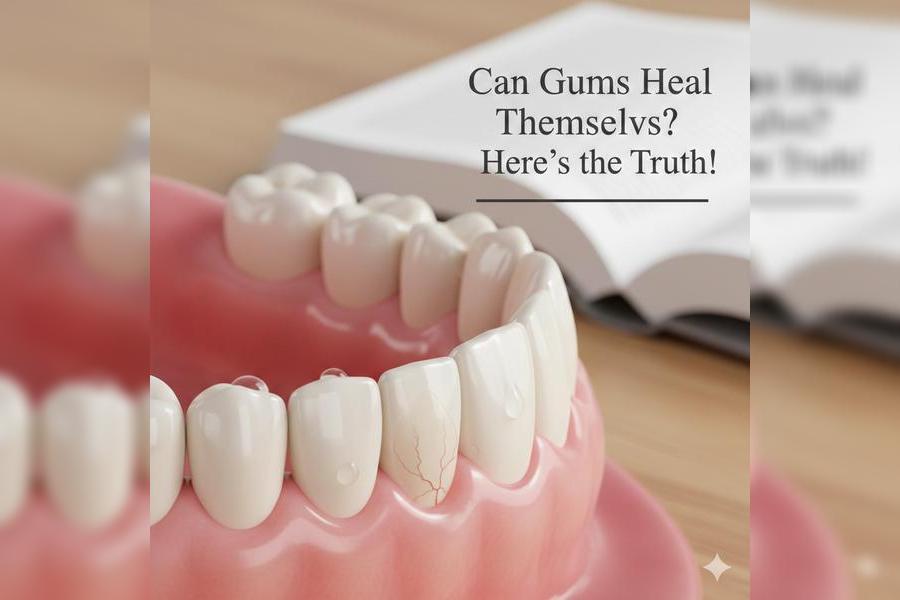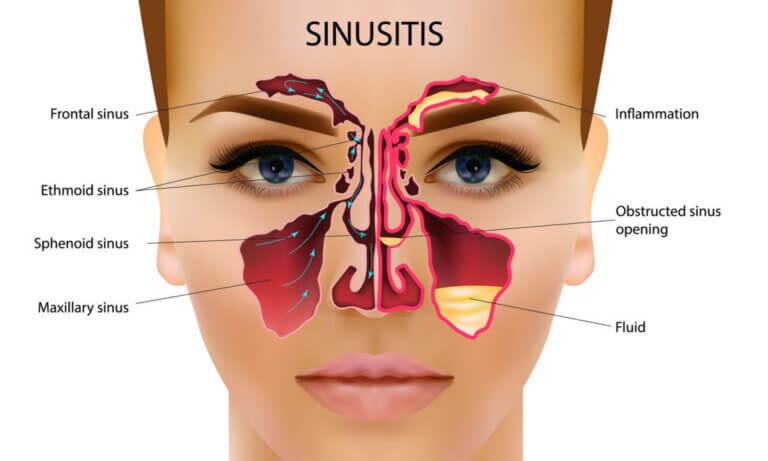You might have been brushing, flossing, or just running your tongue along your teeth when you suddenly noticed something unusual, a soft flap or loose bit of gum tissue. That’s when the question hits: why is a piece of my gum hanging?
It’s not the kind of thing anyone expects to feel, and it can be unsettling. Sometimes it doesn’t hurt at all; other times it’s tender, swollen, or bleeds slightly when touched. Either way, it’s your gum’s way of saying something’s not quite right.
This may occur due to various reasons; mild irritation or violent brushing, gum disease, infection or even loose gum flap amongst the teeth. Although it may not be a serious problem, being left untreated may contribute to more serious problems such as gum recession, infection, or even loss of teeth.
Now, it is time to delve into the real source of that loose gum tissue and how to address it properly before it becomes something more.
“Why Is a Piece of My Gum Hanging?” - The Possible Reasons

What actually is hanging?
When you notice a piece of tissue that seems to dangle or lift away from your gum line, you’re often looking at a loose piece of gum tissue , sometimes called a gum flap. It may occur as a little triangle of tissue between teeth, or as a piece of gum above a tooth that’s partly erupted.
Some key phrases:
-
A loose gum flap between teeth often refers to the triangular bit of gum between adjacent teeth that is no longer firmly attached.
-
A flap over a tooth (especially a partially erupted wisdom tooth) is referred to as a gum flap or operculum.
So when you’re wondering “why is a piece of my gum hanging”, you’re basically encountering one of these situations.
Why does it happen?
There are a number of reasons and not all of them are scary, however, they do demand professional solutions. Here are a few common causes:
- Gum disease: Early or advancing gum disease is by far the most likely cause of a loose flap. In case of inflammation or infection of the gums, excessive tissue may loosen due to the lack of adhesion to the tooth.
- Damage or irritation: Aggression during brushing, flossing that is too rough or that which has been caused by something sharp, can cause damage to gum tissue and result in its loosening.
- Dental appliance stress:- Dentures, crowns, bridges, braces or aligners that do not fit well may cause gum irritation and result in loose tissue.
- Tooth eruption/impaction: Particularly with a wisdom tooth (third molar) that’s partially erupted, a flap of gum tissue can form and look like it’s hanging. This is the operculum scenario.
- Underlying health conditions or habits: Smoking, diabetes, poor oral hygiene, all increase risk of gum trouble.
Why it’s not “just cosmetic”
When you ignore that question , why is a piece of my gum hanging , you risk letting a small issue turn into something more severe. A loose flap may trap food particles, become a site for bacterial accumulation, and evolve into a full-blown infection or advanced gum disease. In short: it’s a warning sign.
How to Get Rid of Hanging Gum?

The next step that people want to take, is to know how to get rid of hanging gum. Well, they’re basically asking, how to restore healthy attachment, stop further damage, and prevent more serious issues?
Good news: It’s possible and you’ve got options.
Immediate home-care steps
Before you visit the dentist, here’s what you can do at home:
-
Rinse gently with warm salt water 2–3 times a day. This helps calm inflammation and loosen some debris.
-
Use a soft-bristled toothbrush and brush gently around the flap, don’t aggressively scrub it.Floss carefully around that area to remove any lodged food particles beneath the flap.
-
Avoid irritating foods (very crunchy, very hot, spicy) on that side for a day or two.
-
Smoking should be avoided and good hygiene should be maintained.
Some of the treatments that your dentist or periodontist would recommend.
-
The treatments differ depending on the level of advancement. Here’s what the pros may do:
-
Deep cleaning (scaling and root planing): This is to remove the plaque/tartar which forms under the gum line and level root surfaces such that gums can re-attach.
-
Ectodontal therapy: Sometimes your dentist may carry out removal of the gum flap and overgrowth on a wisdom tooth (operculum).
-
Surgical procedures: In severe periodontal disease there can be a need for flap surgery, bone or tissue grafting.
-
Frequent follow-ups and care: As in most cases, a loose flap indicates that you have gum problems, you will be required to have a regular check-up.
Introducing a smart daily aid
If you currently suffer from poor oral health, such as bleeding gums, tooth pain, or sensitivity to hot/cold, consider adding a natural yet powerful solution to your routine. The product: The Goodbye Company Gum Disease oral solution.
Why it’s worth looking into:
-
It's an all-natural preventative oral care solution.
-
It’s infused with Omega 3 and 9 oils, plus neem and clove essential oils, known for their antimicrobial, soothing, and anti-inflammatory properties.
-
It helps prevent and treat gingivitis and supports gum-tissue health.
You can support your gums to recover and remain healthy by making it a part of your daily routine of dental care (you should also brush your teeth, floss them, and see a dentist).
Purchasing The Goodbye Company Gum Disease oral solution could be a good option to consider as a part of your daily routine in case you are willing to start assisting your gum health proactively.
Why Did a Chunk of My Gum Fall Off?

This is worth some consideration in case you have a situation in which a portion of gum has fallen off. It is a degree higher than a simple flap. It might be as follows, and here’s what to do.
What the chunk-loss could indicate
-
It might signify that the gum tissue became deprived of blood supply or adhesion and detached on its own.
-
It may happen in advanced gum disease (where support structures are damaged) or after trauma.
- It could also be due to a procedure or eruption of a tooth, but most likely it means you’ve got an ongoing issue needing care.
Key Differences Between “Hanging Flap” And “Chunk Gone”
|
Scenario |
What you see |
Likely cause |
|
Piece of gum hanging |
A flap or loose tissue still partly attached |
Early gum-tissue loosening, irritation or early gum disease |
|
Chunk of gum fallen off |
A portion of gum missing, exposed root or loosely healed area |
More advanced tissue damage, possible gum disease progression, trauma |
If a chunk has fallen off, you should see a dentist promptly rather than assuming it will heal on its own.
What to do now
-
Rinse gently with warm salt water.
-
Continue with some soft brushing and flossing, but not on the bare part.
- Visit your dentist as soon as possible to be able to evaluate the risk of infection, bone exposure and organizational intervention.
Can a Loose Gum Heal Itself?
When you’re asking can a loose gum heal itself? you’re hoping for the best, but preparing for realistic outcomes. The quick answer: sometimes, but only if the cause is mild and addressed early. Let’s unpack that.
When self-healing is possible
If the flap or looseness is due to something minor, like gentle trauma, a small irritation, or early gum inflammation, and you intervene quickly with improved hygiene, then yes, improvement is possible without major intervention.
When it’s unlikely to heal on its own
-
If the issue stems from gum disease where bacteria, pockets, bone loss are in play, then no, your gum won’t truly heal itself. You’ll need intervention.
-
If you have systemic risk factors (smoking, diabetes) or the flap is sizable or gets infected, self healing becomes unlikely.
- If a chunk falls off or the tissue is necrotic, you definitely need professional care.
Why waiting is risky
Ignoring a loose gum can mean:
-
Bacteria thrive in the pocket under the flap, causing infection.
- Further gum recession or periodontal pocket deepening.
- Ultimately, bone loss, tooth mobility, or even tooth loss.
In short: yes, a loose gum can heal itself, but count on it only if you act quickly and the underlying cause is mild. If you’re not sure, don’t wait.
What Is the Piece of Gum Hanging From My Tooth?
Let’s zoom specifically into what it might look like, and why it appears. When you ask what is the piece of gum hanging from my tooth, you’re describing a visual scenario. Knowing what you’re seeing helps you and your dentist decide how urgent things are.
What typically it is
A loose papilla (the little triangular gum bit between two teeth) that has pulled away or lost firm attachment.-
A gum flap over a tooth, often a partially erupted wisdom tooth or a tooth with poor fit, causing extra tissue to hang.
- It may appear as a small triangular flap, or larger soft-tissue flap, perhaps darkish red or swollen.
Concern flags to watch out for
If the hanging piece is accompanied by any of these signs, it’s time to call a dentist:
- Bleeding gums when brushing/flossing.
- Persistent bad breath or bad taste (halitosis).
- Pain, swelling around the area.
- Pus or drainage from the gum piece.
- Mobility or looseness of the adjacent tooth.
- Visual description:
Imagine your gum tissue gently hugging each tooth’s side. Now picture a section between two teeth that lifts up slightly, not flush anymore. That’s the “flap”. If you look at the back-side of your mouth, above a partially erupted tooth, you might see a little “hood”-like flap hanging. That’s the vocal “why is a piece of my gum hanging” moment.
What Is Stage 4 of Receding Gums?
You might have heard of gum recession, but when you ask “what is Stage 4 of receding gums”, you’re entering the territory of advanced gum disease, specifically, what’s often referred to as Stage 4 Periodontitis. Understanding this stage helps make clear how urgent your situation might be.
What we mean by “Stage 4”
In periodontal disease parlance, Stage 4 is the most advanced stage of gum disease. The tissue and bone supporting your teeth are severely damaged.
Symptoms of Stage 4
-
Deep periodontal pockets (spaces between the tooth and gum) that are very hard to clean.
-
Severe gum recession (roots exposed).
-
Loose or shifting teeth due to bone loss.
-
Pus formation, chronic bad breath.
-
Significant bone and connective-tissue destruction.
-
Risk of tooth loss.
Why it matters with your hanging gum scenario
If you have a piece of gum hanging, you might be in early stages of gum breakdown, but if you neglect it, you risk progressing toward stage 4. That’s why the question “why is a piece of my gum hanging” is valid, it could be the tip of the iceberg. Early intervention helps you avoid the heavy treatment required at stage 4.
Quick reference table of gum disease stages
|
Stage |
Name |
Key Features |
Reversibility |
|
Stage 1 |
Gingivitis |
Red, swollen, bleeding gums; no bone loss |
Yes, fully reversible |
|
Stage 2 |
Early Periodontitis |
Gum pockets begin; mild bone loss |
Manageable with professional care |
|
Stage 3 |
Moderate Periodontitis |
Deeper pockets, more bone loss, some tooth mobility |
Not fully reversible, but treatment can stabilize |
|
Stage 4 |
Advanced Periodontitis |
Severe bone/tissue loss, loose teeth, risk of tooth loss |
Damage often irreversible; goal is to stop progression |
Reversibility refers to restoring full original support, once bone is gone, you can stabilise but not fully reverse.
What Does a Gum Flap Look Like?
Understanding the appearance of a gum flap helps you identify whether what you’re seeing is routine or risky. When you’re still thinking “why is a piece of my gum hanging”, visual context helps.
Description and different scenarios
-
Between two teeth: The triangular papilla (the little wedge of gum between teeth) looks lifted, loose, pink-red, perhaps puffed up or even partially detached.
-
Over a tooth: A soft tissue hood above a posterior tooth (typically wisdom tooth) hanging over the tooth surface, sometimes catching food, sometimes red or infected.
-
Color and texture: Healthy gum is firm and pink. A flap may appear reddish, swollen, purplish, or even greyish if infection has set in.
- Mobility: You may gently touch with a clean finger or a dental probe and feel that it moves or lifts slightly (it should not).
Why the appearance matters
-
A loose flap can trap food debris and bacteria, making it a site of further gum breakdown.
-
If you see pus, darkening, foul smell, or major swelling, that suggests infection rather than just mechanical irritation.
- If the adjacent tooth looks longer (root exposed) or the flap reveals root surface, it suggests a more severe recession.
Quick self-check
-
Does the flap move when you gently brush or tongue?
-
Do you get persistent bad breath or taste around that area?
-
Is there bleeding, swelling, or pain around the flap?
-
Do you have other signs of gum trouble (loose teeth, gaps forming, deeper pockets)?
If yes to any, treat the situation seriously.
Can Brushing Too Hard Cause Loose Gums?
Yes, it absolutely can. If you’re wondering can brushing too hard cause loose gums?, the answer is yes, and it’s more common than you might think. Many people assume “the harder I scrub, the cleaner I get”, but in reality, it may lead to gum damage.
How aggressive brushing affects gums
-
Using a hard-bristled toothbrush or brushing with heavy force can physically damage the gum tissue, causing it to recede or become detached.
-
Brushing horizontally, scrubbing side-to-side aggressively near the gum line, over time may cause gum recession. Some sources note that brushing style and hard brushes are associated with gingival recession.
- Over time this repeated trauma can lead to the appearance of a hanging piece of gum or cause loss of attachment.
What to do instead
-
Use a soft-bristled toothbrush (or ultra-soft if you have sensitive gums).
-
Employ the Bass technique: angle the brush at 45° to the gum line, use gentle circular or vibrating motions rather than forceful scrubbing.
-
Brush for the full recommended time (2 minutes), twice a day, but lightly and thoroughly.
-
Replace your brush every 3-4 months (or sooner if bristles fray).
-
If your gums are sensitive and you have hanging tissue, switch to gentle cleaning and consider a therapeutic gum-care product (like the one I mentioned earlier) to support healing.
Key takeaway
So yes, can brushing too hard cause loose gums? Definitely yes. That’s why when you’re dealing with a hanging gum flap, you want to review your brushing habits alongside other causes.
Taking Control: Action Plan And Prevention

You now know how serious this problem can be. Let’s put together a simple, actionable plan you can follow today to take control of the situation and prevent it from worsening.
Daily routine
-
Brush twice a day using a soft-bristled brush, with gentle technique, 2 minutes each time.
-
Floss once a day carefully (especially around the area of hanging gum).
-
Rinse with warm salt water once a day to keep inflammation down.
-
Introduce The Goodbye Company Gum Disease oral solution into your oral care routine, especially if you have sensitivity, bleeding gums, or loose/flapping gum tissue. The Omega 3 & 9 oils, neem and clove essential oils will support your gum-tissue health while you work to heal.
-
Avoid smoking, avoid overly crunchy/irritating foods, reduce sugar intake, and maintain good general health (sleep, nutrition) which all impact gum health.
Monitor and evaluate
-
Take pictures (on your phone) of the area weekly, does it look less red? Less mobile?
-
Check for signs of improvement: less bleeding, less bad taste or bad breath, less movement of the flap.
-
If in 1–2 weeks you see no improvement, or if you get worse (pain, pus, swelling, increased mobility of tooth), schedule a dental exam immediately.
When to see a dentist
You should call your dentist if you notice:
-
The flap is increasing in size or becoming painful.
-
Persistent bleeding or pus around the area.
-
A tooth beside the hanging gum feels loose.
-
Bad breath that doesn’t improve with good hygiene.
-
You have risk factors like diabetes, smoking, or recent dental work that may complicate gum healing.
Long-term prevention
-
Maintain twice-yearly dental cleanings and check-ups (or more frequently if you have gum-disease risk).
-
Adopt gentle brushing habits and ensure everyone in your household knows the proper technique.
-
Use therapeutic oral-care products (like the one mentioned) that support gum health beyond just cavity prevention.
-
Monitor for early signs of gum trouble: bleeding gums, bad breath, receding gum line. Catching issues early simplifies treatment and reduces cost.
Why Including Natural Support Makes a Difference
Most people focus on flossing and brushing, and yes, those are essential, but when you already have a hanging gum piece or signs of gum-tissue compromise, sometimes a little extra support makes all the difference. That’s where natural, targeted formulations come in.
Here’s how The Goodbye Company Gum Disease oral solution helps:
-
Omega 3 and Omega 9 oils: These fatty acids are anti-inflammatory, support tissue repair, and help maintain gum-tissue resilience.
-
Neem: Historically used in oral care, neem has antimicrobial properties that help reduce harmful oral-bacteria load.
-
Clove essential oil: Well-known for soothing gum pain, supporting circulation in the tissue, and offering antimicrobial benefits.
-
By integrating this product into your routine, you give your gums a daily boost beyond just mechanical cleaning, supporting the biological repair and defence mechanisms.
If you’re already asking “why is a piece of my gum hanging”, then introducing such a product is not overkill, it could be what helps ensure that the hanging piece becomes stable again instead of deteriorating. It’s natural, preventative and complements your brushing/flossing routine.
Outlook
If you’re still wondering “why is a piece of my gum hanging”, I hope by now you realise this is your body giving you a signal, and you’re wise to listen. Whether it’s a loose papilla, a flap over a tooth, or something that looks like part of your gum has fallen off, it’s a warning: your gum tissue is under stress and might be sliding toward more serious trouble.
Key take-aways:
-
A hanging piece of gum is not always catastrophic, but it is a valid red flag.
-
Don’t assume it will heal fully on its own, address it.
-
Improve hygiene, adopt gentle brushing, rinse with salt water, and incorporate a gum-health supportive product like The Goodbye Company Gum Disease oral solution.
-
Monitor closely. If things don’t improve in 1–2 weeks or you see worsening signs, get to a dentist.
-
Preventing severe gum disease (Stage 4 Periodontitis) is far better than dealing with it after the fact. The less damage done, the simpler recovery will be.
You’ve got this. By taking fast action, understanding the root cause and supporting your gums with the right tools (mechanical + biological), you’re giving your mouth the best chance to heal. Don’t let that hanging bit of gum hang around longer than it should, let’s get it anchored back to health.


